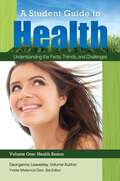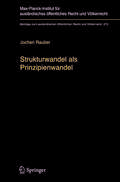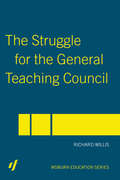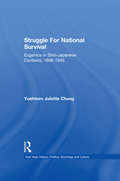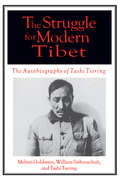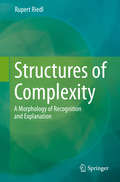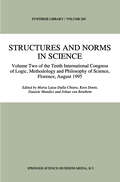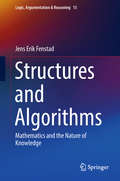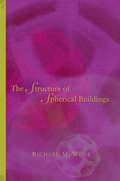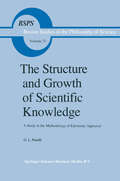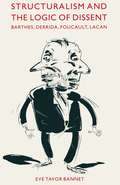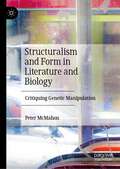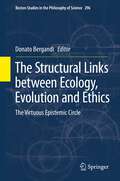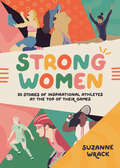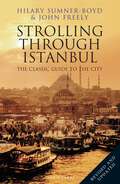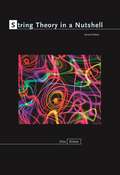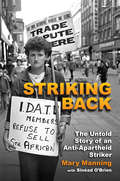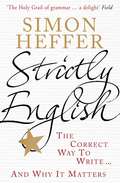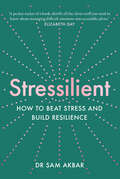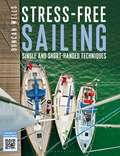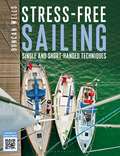- Table View
- List View
A Student Guide to Health [5 volumes]: Understanding the Facts, Trends, and Challenges [5 volumes]
This comprehensive, five-volume reference set is aligned with the National Health Education Standards, containing up-to-date, scientifically based information on a variety of health and wellness topics relevant to high school students.A Student Guide to Health: Understanding the Facts, Trends, and Challenges provides straightforward, factual, and accessible information about a multitude of health issues. It is an essential reference set that provides high school students, teachers, and administrators with a comprehensive health and wellness education resource that aligns with National Health Education Standards and common health curriculum. This expansive five-volume set is ideal for students' research projects; highly useful as a resource for community college and public library patrons, librarians, teens, and parents; and is a suitable supplement to any health education curriculum.Each chapter includes up-to-date, evidence-based information that provokes further examination and encourages critical thinking to evaluate the validity of information encountered about health and wellness topics. Each chapter provides an abundance of references and lists of resources for further information, including books, articles, websites, organizations, and hotlines. Special attention is paid to social trends that affect youth health and wellness, such as bullying, eating disorders, steroid abuse, sexting, and the peer pressure associated with drug use and abuse.
Strukturwandel als Prinzipienwandel: Theoretische, dogmatische und methodische Bausteine eines Prinzipienmodells des Völkerrechts und seiner Dynamik (Beiträge zum ausländischen öffentlichen Recht und Völkerrecht #272)
by Jochen RauberDas Buch versucht, zu einem besseren Verständnis des Strukturwandels des Völkerrechts beizutragen. Zu diesem Zweck entwirft es ein Prinzipienmodell des Völkerrechts, mit dem sich die völkerrechtlichen Entwicklungen, an die die Strukturwandelthese anknüpft, theoretisch erklären und dogmatisch erfassen lassen. Es weist nach, dass die Regeln des Völkerrechts in normativer Hinsicht auf völkerrechtlichen Grundprinzipien aufbauen, zeigt, dass der Bestand dieser Prinzipien wächst und analysiert, inwieweit das Aufkommen neuer Völkerrechtsprinzipien das Verständnis bestehender Völkerrechtsregeln beeinflusst. Ausgehend hiervon plädiert das Werk dafür, die Erscheinungen des völkerrechtlichen Strukturwandels als Konsequenz von Veränderungen im Bestand völkerrechtlicher Grundprinzipien zu verstehen. An Fallstudien aus unterschiedlichen Teilbereichen des Völkerrechts wird die Theorie abschließend erprobt.
The Struggle for the General Teaching Council
by Richard WillisThis book chronicles the history of the struggle to promote a self-governing body for the teaching profession from its early problems at the start of the twentieth century right through to the establishment of the General Teaching Council of England in 2000. It also explores the interest groups and policy makers who impeded its achievement and the attitude of teacher unions and the teachers themselves to the establishment of such a body.The book will be of interest to academics, researchers and historians, as well as postgraduate students.
The Struggle for the General Teaching Council (Woburn Education Ser.)
by Richard WillisThis book chronicles the history of the struggle to promote a self-governing body for the teaching profession from its early problems at the start of the twentieth century right through to the establishment of the General Teaching Council of England in 2000. It also explores the interest groups and policy makers who impeded its achievement and the attitude of teacher unions and the teachers themselves to the establishment of such a body.The book will be of interest to academics, researchers and historians, as well as postgraduate students.
Struggle For National Survival: Chinese Eugenics in a Transnational Context, 1896-1945 (East Asia: History, Politics, Sociology and Culture)
by Yuehtsen Juliette ChungThis dissertation is a historical investigation of the relationship between science and society through the comparative study of eugenics movements as they developed in both Japan and China from the 1890's to the 1940's.
Struggle For National Survival: Chinese Eugenics in a Transnational Context, 1896-1945 (East Asia: History, Politics, Sociology and Culture)
by Yuehtsen Juliette ChungThis dissertation is a historical investigation of the relationship between science and society through the comparative study of eugenics movements as they developed in both Japan and China from the 1890's to the 1940's.
The Struggle for Modern Tibet: The Autobiography of Tashi Tsering
by Melvyn C. Goldstein William R Siebenschuh Tashi TseringThis captivating autobiography by a Tibetan educator and former political prisoner is full of twists and turns. Born in 1929 in a Tibetan village, Tsering developed a strong dislike of his country's theocratic ruling elite. As a 13-year-old member of the Dalai Lama's personal dance troupe, he was frequently whipped or beaten by teachers for minor infractions. A heterosexual, he escaped by becoming a drombo, or homosexual passive partner and sex-toy, for a well-connected monk. After studying at the University of Washington, he returned to Chinese-occupied Tibet in 1964, convinced that Tibet could become a modernized society based on socialist, egalitarian principles only through cooperation with the Chinese. Denounced as a 'counterrevolutionary' during Mao's Cultural Revolution, he was arrested in 1967 and spent six years in prison or doing forced labor in China. Officially exonerated in 1978, Tsering became a professor of English at Tibet University in Lhasa. He now raises funds to build schools in Tibet's villages, emphasizing Tibetan language and culture.
The Struggle for Modern Tibet: The Autobiography of Tashi Tsering (Mellen Studies In Education Ser. #Vol. 88)
by Melvyn C. Goldstein William R Siebenschuh Tashi TseringThis captivating autobiography by a Tibetan educator and former political prisoner is full of twists and turns. Born in 1929 in a Tibetan village, Tsering developed a strong dislike of his country's theocratic ruling elite. As a 13-year-old member of the Dalai Lama's personal dance troupe, he was frequently whipped or beaten by teachers for minor infractions. A heterosexual, he escaped by becoming a drombo, or homosexual passive partner and sex-toy, for a well-connected monk. After studying at the University of Washington, he returned to Chinese-occupied Tibet in 1964, convinced that Tibet could become a modernized society based on socialist, egalitarian principles only through cooperation with the Chinese. Denounced as a 'counterrevolutionary' during Mao's Cultural Revolution, he was arrested in 1967 and spent six years in prison or doing forced labor in China. Officially exonerated in 1978, Tsering became a professor of English at Tibet University in Lhasa. He now raises funds to build schools in Tibet's villages, emphasizing Tibetan language and culture.
Structures of Complexity: A Morphology of Recognition and Explanation
by Rupert RiedlIn this book, the author Rupert Riedl investigates the structural and functional correlations of issues considered as "complex". He brilliantly analyzes the definition of complexity, the occurrence of complexity, the meaning of complexity, and last-but-not-least the way complexity is dealt with professionally.In recent years, our view of the world has been split into ever smaller segments – in part due to the increasing importance of the natural sciences and their associated analytical power. This calls for once again focusing on complexity and the holistic aspects, on interdisciplinary and synoptic approaches. This book is a translation of the original German version “Strukturen der Komplexität”, which was published in 2000. The discussion of complexity from the perspective of a biologist has long been overdue when it was published and is still up-to-date.
Structures and Norms in Science: Volume Two of the Tenth International Congress of Logic, Methodology and Philosophy of Science, Florence, August 1995 (Synthese Library #260)
by JohanBenthem DanieleMundici KeesDoets Maria Luisa DallaChiaraThis book gives a state-of-the-art survey of current research in logic and philosophy of science, as viewed by invited speakers selected by the most prestigious international organization in the field. In particular, it gives a coherent picture of foundational research into the various sciences, both natural and social. In addition, it has special interest items such as symposia on interfaces between logic and methodology, semantics and semiotics, as well as updates on the current state of the field in Eastern Europe and the Far East.
Structures and Algorithms: Mathematics and the Nature of Knowledge (Logic, Argumentation & Reasoning #15)
by Jens Erik FenstadThis book explains exactly what human knowledge is. The key concepts in this book are structures and algorithms, i.e., what the readers “see” and how they make use of what they see. Thus in comparison with some other books on the philosophy (or methodology) of science, which employ a syntactic approach, the author’s approach is model theoretic or structural. Properly understood, it extends the current art and science of mathematical modeling to all fields of knowledge. The link between structure and algorithms is mathematics. But viewing “mathematics” as such a link is not exactly what readers most likely learned in school; thus, the task of this book is to explain what “mathematics” should actually mean. Chapter 1, an introductory essay, presents a general analysis of structures, algorithms and how they are to be linked. Several examples from the natural and social sciences, and from the history of knowledge, are provided in Chapters 2–6. In turn, Chapters 7 and 8 extend the analysis to include language and the mind. Structures are what the readers see. And, as abstract cultural objects, they can almost always be seen in many different ways. But certain structures, such as natural numbers and the basic theory of grammar, seem to have an absolute character. Any theory of knowledge grounded in human culture must explain how this is possible. The author’s analysis of this cultural invariance, combining insights from evolutionary theory and neuroscience, is presented in the book’s closing chapter. The book will be of interest to researchers, students and those outside academia who seek a deeper understanding of knowledge in our present-day society.
The Structure of Spherical Buildings
by Richard M. WeissThis book provides a clear and authoritative introduction to the theory of buildings, a topic of central importance to mathematicians interested in the geometric aspects of group theory. Its detailed presentation makes it suitable for graduate students as well as specialists. Richard Weiss begins with an introduction to Coxeter groups and goes on to present basic properties of arbitrary buildings before specializing to the spherical case. Buildings are described throughout in the language of graph theory. The Structure of Spherical Buildings includes a reworking of the proof of Jacques Tits's Theorem 4.1.2. upon which Tits's classification of thick irreducible spherical buildings of rank at least three is based. In fact, this is the first book to include a proof of this famous result since its original publication. Theorem 4.1.2 is followed by a systematic study of the structure of spherical buildings and their automorphism groups based on the Moufang property. Moufang buildings of rank two were recently classified by Tits and Weiss. The last chapter provides an overview of the classification of spherical buildings, one that reflects these and other important developments.
The Structure and Growth of Scientific Knowledge: A Study in the Methodology of Epistemic Appraisal (Boston Studies in the Philosophy and History of Science #73)
by G.L. PanditProfessor Pandit, working among the admirable group of philosophers at the University of Delhi, has written a fundamental criticism and a constructive re-interpretation of all that has been preserved as serious epistemological and methodological reflections on the sciences in modern Western philosoph- from the times of Galileo, Newton, Descartes and Leibniz to those of Russell and Wittgenstein, Carnap and Popper, and, we need hardly add, onward to the troubling relativisms and reconstructions of historical epistemologies in the works of Hanson, Kuhn, Lakatos and Feyerabend. His themes are intrigu ing, set forth as they are with masterly case studies of physics and the life sciences, and within an original conceptual framework for philosophical analysis of the processes, functions, and structures of scientific knowing. Pandit's contributions deserve thoughtful examination. For our part, we wish to point to some among them: (1) an interactive articulation of subjective and objective factors of both problems and theories in the course of scientific development; (2) a striking contrast between the explanatory power of a scientific theory and its 'resolving power', i. e.
Structuralism and the Logic of Dissent: Barthes, Derrida, Foucault, Lacan
by Eve Tavor BannetStructuralism and the Logic of Dissent is a fascinating and lucid exploration of the seminal writings of four eminent French structuralists that sheds new light on influential theoretical texts. Eve Tavor Bannet discusses the work of Barthes, Derrida, Foucault, and Lacan as coherent philosophical fictions, showing their contradictory political, social, and pedagogical implications and their complex historicity.
Structuralism and Form in Literature and Biology: Critiquing Genetic Manipulation
by Peter McMahonThe book considers biology in parallel with philosophical structuralism in order to argue that notions of form in the organism are analogous to similar ideas in structuralist philosophy and literary theory. This analogy is then used to shed light on debates among biological scientists from the turn of the 19th century to the present day, including Cuvier, Geoffroy Saint-Hilaire, Dawkins, Crick, Goodwin, Rosen and West-Eberhard. The book critiques the endorsement of genetic manipulation and bioengineering as keys to solving agricultural and environmental problems, suggesting that alternative models have been marginalized in the promotion of this discourse. Drawing from the work of philosophers including Cassirer, Saussure, Jakobson and Foucault the book ultimately argues that methods based on agroecology, supported by molecular applications (such as marker-assisted selection, MAS), can both advance agricultural development and remain focused on the whole organism.
The Structural Links between Ecology, Evolution and Ethics: The Virtuous Epistemic Circle (Boston Studies in the Philosophy and History of Science)
by Donato BergandiEvolutionary biology, ecology and ethics: at first glance, three different objects of research, three different worldviews and three different scientific communities. In reality, there are both structural and historical links between these disciplines. First, some topics are obviously common across the board. Second, the emerging need for environmental policy management has gradually but radically changed the relationship between these disciplines. Over the last decades in particular, there has emerged a need for an interconnecting meta-paradigm that integrates more strictly evolutionary studies, biodiversity studies and the ethical frameworks that are most appropriate for allowing a lasting co-evolution between natural and social systems. Today such a need is more than a mere luxury, it is an epistemological and practical necessity.
Strong Women: Inspirational athletes at the top of their game
by Suzanne WrackOverpower. Overtake. Overcome. – Serena WilliamsThroughout history, every woman pulling on spikes, lacing up boots and picking up a racquet has been a rebel – and this explosive book aims to uncover the often hidden histories behind 50 of these incredible pioneers.From the first Black woman to be a professional softball player, Betty Chapman, to the iconic 'Battle of the Sexes' match won by Billie Jean King, and from trans trailblazer Laurel Hubbard to Emma Raducanu's unforgettable US Open win, award-winning sports journalist Suzanne Wrack celebrates sporting giants at the absolute top of their games.
Strolling Through Istanbul: The Classic Guide to the City
by Hilary Sumner-Boyd John FreelyThis classic guide to Istanbul by Hilary Sumner-Boyd and John Freely - the 'best travel guide to Istanbul' (The Times), 'a guide book that reads like a novel' (New York Times) - is here, for the first time since its original publication thirty-seven years ago, published in a completely revised and updated new edition. Taking the reader on foot through this captivating city - European Capital of Culture 2010 - the authors describe the historic monuments and sites of what was once Constantinople and the capital in turn of the Byzantine and Ottoman Empires, in the context of the great living city. Woven throughout are lively anecdotes, secret histories, hidden gems and every major place of interest the traveller will want to see. Practical and informative, readable and vividly described, this is the definitive guide to and story of Istanbul, by those who know it best.'The best travel guide to Istanbul' - The Times
Stroke and the Family: A New Guide (The Harvard University Press Family Health Guides)
by Joel SteinA young woman suffers a stroke; she rebuilds her career and personal life, but not before her marriage falls apart. An eighty-year-old man dies unexpectedly of stroke, leaving his grown sons to wonder whether they are genetically predisposed to stroke. A recently retired woman confronts her future with a husband suddenly disabled by stroke. How can she help her husband? Will he ever recover? How will she cope with her own emotional stress? In Stroke and the Family: A New Guide, Joel Stein shows the many faces of stroke and the people it strikes. To the family just beginning to cope with the aftermath of a stroke, the diagnostic tests, drug regimens, rehabilitation strategies, and varied prognoses can be completely bewildering. Because stroke can affect memory, speech, and movement, the impact on everyday routines and close relationships can be especially intense. Stein has produced a book that allows general readers and nonphysicians working with stroke survivors to make sense of the confusing variety of diagnoses and treatment options, and goes on to explore challenges the recovering stroke patient and the recovering family will face during a long recuperation with an uncertain outcome. Stroke and the Family offers up-to-date information and places the current research findings in context.
String Theory in a Nutshell: Second Edition (In a Nutshell #21)
by Elias KiritsisThe essential introduction to modern string theory—now fully expanded and revisedString Theory in a Nutshell is the definitive introduction to modern string theory. Written by one of the world’s leading authorities on the subject, this concise and accessible book starts with basic definitions and guides readers from classic topics to the most exciting frontiers of research today. It covers perturbative string theory, the unity of string interactions, black holes and their microscopic entropy, the AdS/CFT correspondence and its applications, matrix model tools for string theory, and more. It also includes 600 exercises and serves as a self-contained guide to the literature.This fully updated edition features an entirely new chapter on flux compactifications in string theory, and the chapter on AdS/CFT has been substantially expanded by adding many applications to diverse topics. In addition, the discussion of conformal field theory has been extensively revised to make it more student-friendly.The essential one-volume reference for students and researchers in theoretical high-energy physicsNow fully expanded and revisedProvides expanded coverage of AdS/CFT and its applications, namely the holographic renormalization group, holographic theories for Yang-Mills and QCD, nonequilibrium thermal physics, finite density physics, and entanglement entropyIdeal for mathematicians and physicists specializing in theoretical cosmology, QCD, and novel approaches to condensed matter systemsAn online illustration package is available to professors
Striking Back: The Untold Story of an Anti-Apartheid Striker
by Mary Manning Sinead O'Brien‘Young shopworkers on Henry Street in Dublin, who in 1984 refused to handle the fruits of apartheid, provided me with great hope during my years of imprisonment, and inspiration to millions of South Africans.’ Nelson Mandela Dunnes Stores cashier Mary Manning knew little about apartheid when, at the age of twenty-one, she refused to register the sale of two Outspan South African grapefruits under a directive from her union. She was suspended and nine of her co-workers walked out in support. They all assumed they would shortly return to work. But theirs were kindling voices, on the cusp of igniting a mass movement they couldn’t even imagine. Despite harassment from the Gardaí and disparagement from the Irish government and even the Catholic Church, they refused to be silenced. Within months they were embroiled in a dispute that captured the world’s attention. In this searing account, Mary tells the extraordinary story of their public fight for justice, as well as her emotive journey of discovery into her family’s past. Mary’s mother had been forced to carry a secret burden of shame for her whole life by the same oppressive establishment Mary was fighting. Striking Back is a provocative and inspiring story that epitomises the resilience of hope and the human spirit, even under the most formidable of circumstances. It shows that each of us has the power to change the world.
Strictly English: The correct way to write ... and why it matters
by Simon Heffer"Be in no doubt: the beer was drunk but the man drank the beer.""We must avoid vulgarities like 'front up'. If someone is 'fronting up' a television show, then he is presenting it."Simon Heffer's incisive and amusingly despairing emails to colleagues at the The Daily Telegraph about grammatical mistakes and stylistic slips have attracted a growing band of ardent fans over recent years. Now, in his new book Strictly English, he makes an impassioned case for an end to the sloppiness that has become such a hallmark of everyday speech and writing, and shows how accuracy and clarity are within the grasp of anyone who is prepared to take the time to master a few simple rules.If you wince when you see "different than" in print, or are offended by people who think that "infer" and "imply" mean the same thing, then this book will provide reassurance that you are not alone. And if you believe that precise and elegant English really does matter, then it will prove required reading.
Stressilient: How To Beat Stress And Build Resilience
by Dr Sam AkbarManage your mind. Handle your emotions. Concentrate on what matters in life.
Stress-free Sailing: Single and Short-handed Techniques
by Duncan WellsThe vast majority of sailing yacht scenarios comprise a couple sailing the boat together, and needing to carry out all manoeuvres and activities themselves with no help from a back-up crew. Their boat handling, navigation, sail handling, anchoring and mooring skills all have to be carried out both efficiently and effectively, preferably with the minimum of physical effort (to conserve energy).But most sailing technique books assume a crew of 3 or 4, all willing to lend a hand. This book is therefore a first, addressing the most common sailing scenarios that anyone cruising will have to deal with, and providing clever, original, highly effective (and most importantly successfully tried and tested by the author) techniques and solutions for dealing with the huge variety of essential operations on a boat – from sail setting and reefing, to picking up mooring buoys in a variety of wind and tide situations, anchoring, berthing and leaving a pontoon shorthanded, picking up a man overboard, sailing in fog and heavy weather – and even going up the mast.This book will be a godsend to anyone sailing single or shorthanded – including couples with young children who need to be supervised by one parent whilst the other runs the boat.Organised into techniques for different cruising scenarios, the book features step by step sequential photos showing exactly how to approach each situation and carry out the task in hand.
Stress-Free Sailing: Single and Short-handed Techniques
by Duncan WellsThe vast majority of sailing yacht scenarios comprise a couple sailing the boat together, and needing to carry out all manoeuvres and activities themselves with no help from a back-up crew. Their boat handling, navigation, sail handling, anchoring and mooring skills all have to be carried out both efficiently and effectively, preferably with the minimum of physical effort (to conserve energy).But most sailing technique books assume a crew of 3 or 4, all willing to lend a hand. This book is therefore a first, addressing the most common sailing scenarios that anyone cruising will have to deal with, and providing clever, original, highly effective (and most importantly successfully tried and tested by the author) techniques and solutions for dealing with the huge variety of essential operations on a boat – from sail setting and reefing, to picking up mooring buoys in a variety of wind and tide situations, anchoring, berthing and leaving a pontoon shorthanded, picking up a man overboard, sailing in fog and heavy weather – and even going up the mast.This book will be a godsend to anyone sailing single or shorthanded – including couples with young children who need to be supervised by one parent whilst the other runs the boat.Organised into techniques for different cruising scenarios, the book features step by step sequential photos showing exactly how to approach each situation and carry out the task in hand.
